3 Tourism: 2008アーカイブ

Ritsurin Garden is a stroll-type landscape garden in the traditional style, located in central Takamatsu and recognized as a "national treasure" garden. Mt. Shiun provides the backdrop for the park's six ponds and 13 hills, complemented by cherry blossoms in the spring, verdant green in the summer, fall colors, and snow-dusted scenery in the winter.
>>>>>>>>>>Ritsurin Garden Official Website

Dedicated to the guardian god of the sea, the ancient Kotohiragu Shrine in Konpira is nationally renowned. Every year many pilgrims make the journey to Konpira, where reaching the main shrine requires a hike up 785 stone stairs, or 1368 to the farthest shrine.
Visitors to the shrine also enjoy the nearby kabuki theater “Kanamaru-za”, the oldest of its type in Japan. Konpira onsen is another popular spot.

This gorge cutting through the center of Shodoshima is a scenic site of natural beauty. The fall colors are especially popular, and visitors can look down on them from the ropeway that runs to the top of the mountain.

The dual-purpose road and rail Seto Ohashi Bridge spans 9.4 kilometers. Its six bridges leapfrog between five islands across the Seto Inland Sea. Seen from the Seto Ohashi Memorial Park on the Shikoku side, the bridge stretches majestically across the ocean-blue strait.

Marugame Castle was built at the end of the 16th century by the warlord Ikoma Chikamasa. It is famous for its dynamic stone walls, which are sometimes described as a fan-shaped slope. The castle is a designated place of national historic interest.

Yashima - the “roof island” - is a roof-shaped lava plateau rising out of the Seto Inland Sea as a peninsula. The view from the observatory on top is spectacular, presenting a panoramic view of the Seto Inland Sea and its many islands.

Kotohiki Park’s white sand and green pines are well-known scenic spots in Ariakehama. Inside the park is a large sand sculpture of a coin known as “zenigata”, with a circumference of 345 meters.

Kinrin Park is known as “Tsuda-no-matsubara”. It includes thousands of pine trees more than 600 years old, and lovely views of the sharp contrast between white sand and azure sea. The beach is very popular with sunbathers and swimmers in the summer.

Referred to as the “inner parlor of Sanuki”, Shionoe is one of the region’s most popular hotsprings - or "onsen" - destinations. With its proximity to Takamatsu city and the airport, and a number of valleys and other scenic spots, Shionoe is a great place to enjoy being nestled in the mountains.
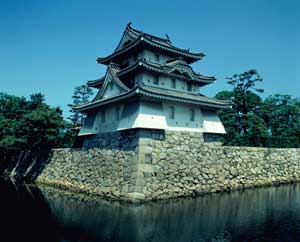
Tamamo Park is a small park built on the former site of Takamatsu Castle. The castle itself faces the Seto Inland Sea on the north, and is bounded on the three remaining sides by a moat filled with seawater, a rarity in Japan.
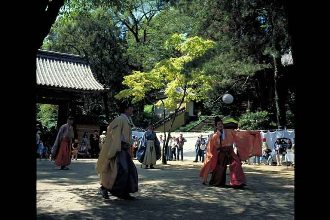
From its introduction from China (along with Buddhism) 1400 years ago, the sport of kemari has a long history in Japan. Originally a game played by the Emperor and other nobility, the Shogun, warrior classes, and monks and priests of Buddhist and Shinto affiliation, the sport spread in popularity and was eventually enjoyed by people of all classes, ages, and genders.
“Dedication kemari” takes place on May 5th at Kotohira Shrine. Participants don colorful costumes and, after praying at the shrine, offer the ball to the gods before playing with it. They then demonstrate the fantastic techniques employed when playing kemari.
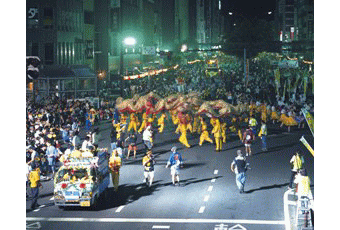
The Taki-no-miya Nenbutsu Dance originated 1000 years ago. The year 888 saw a long drought in the Sanuki region. The provincial governor prayed for rain and, when it actually began to fall, his overjoyed subjects began to dance. Their ecstatic movements are said to be the origin of today’s dance.
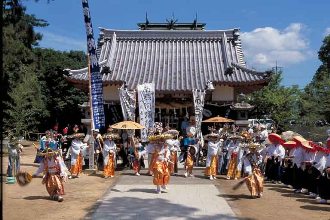
The Taki-no-miya Nenbutsu Dance originated 1000 years ago. The year 888 saw a long drought in the Sanuki region. The provincial governor prayed for rain and, when it actually began to fall, his overjoyed subjects began to dance. Their ecstatic movements are said to be the origin of today’s dance.

The chousa is a large drumming platform used in festivals. Toyohama in Kanonji holds the Chousa Festival in fall. Twenty-some of these floats are decorated with gold thread and other adornments and paraded around town for three days.
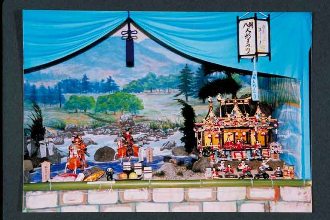
Nio, in Mitoyo, has a festival every year on September 20th to pray for the healthy growth of their children. Stages are constructed from rocks, sand, and vegetation in front of stores or in tatami rooms; people use these stages to recreate famous scenes from well-known historical events.

The old "kaido" highway in Busshozan, Takamatsu, is a good example of a traditional village built up around a temple. Old shops and homes are preserved even today.
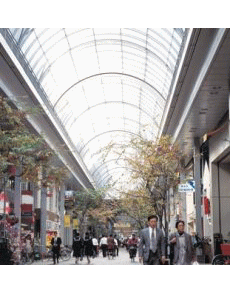
Characteristic of castle towns, Takamatsu is laid out in a grid-like pattern, with many one-way streets. The shouten-gai, or shopping arcade, might be called the nucleus of the city, with eight arcades and a combined length of 2.7 kilometers (which also makes it the longest shopping arcade in Japan). Approximately 800 shops, bars, and restaurants stand side by side in and around the arcade.
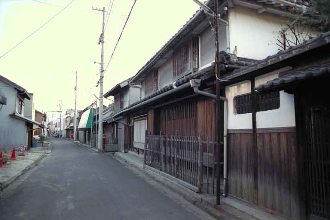
Facing the ocean in eastern Kagawa, Hiketa has been an important point of trade for soy sauce and the Three Sanuki Whites (sugar, salt, and cotton) since the Edo Period. The many ships transporting goods from Hiketa made it one of the most important port towns in eastern Sanuki. Some of the feeling of a castle town remains even today, and you might feel like you’ve been transported back in time as you walk its streets.
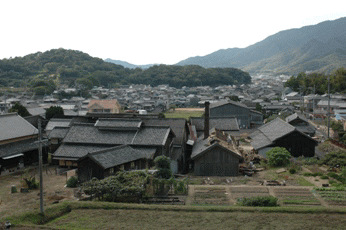
A walk along the main street in Uchinomicho, Shodoshima, gives visitors a glimpse into a past era; old soy sauce warehouses and breweries line the way. Soy sauce, one of the island’s traditional products, is a piece of living history.
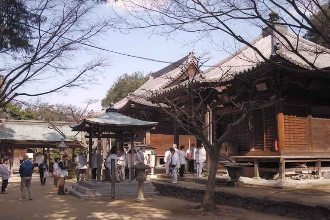
The Shikoku 88-temple pilgrimage follows the footsteps of Buddhist priest Kuukai (Kobo Daishi), who was born 1200 years ago in present-day Kagawa Prefecture. Pilgrims (henro) follow the path in distinctive white garb and bamboo hats. Recently young people, looking for peace of mind more than spiritual healing, have set out on the route. Kagawa Prefecture is home to 22 of the temples on the route, from number 67, Daikouji, to number 88, Ookuboji.
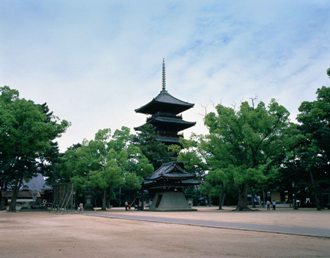
Zentsuuji is most famous for being the birthplace of Kobo Daishi (Kuukai), and is also the organizational headquarters for Shingon Buddhism. The grounds of the temple contain a 45 meter tall five-story pagoda, and many historical buildings ranked as national treasures.
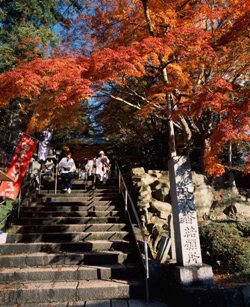
Located in Sanuki City this temple is number 88, the last on Shikoku’s pilgrim route. Though nearby parking lots have recently enabled access by car, the route used to be a very difficult one through 18km of foothills. Pilgrims arriving here reflect on their long journey, looking back on their memories and experiences. The temple grounds are lined with pilgrims' staffs (used as walking sticks on the route) and the crutches of those who have recovered from illness.
 Kagawa Prefecture, Japan
Kagawa Prefecture, Japan
